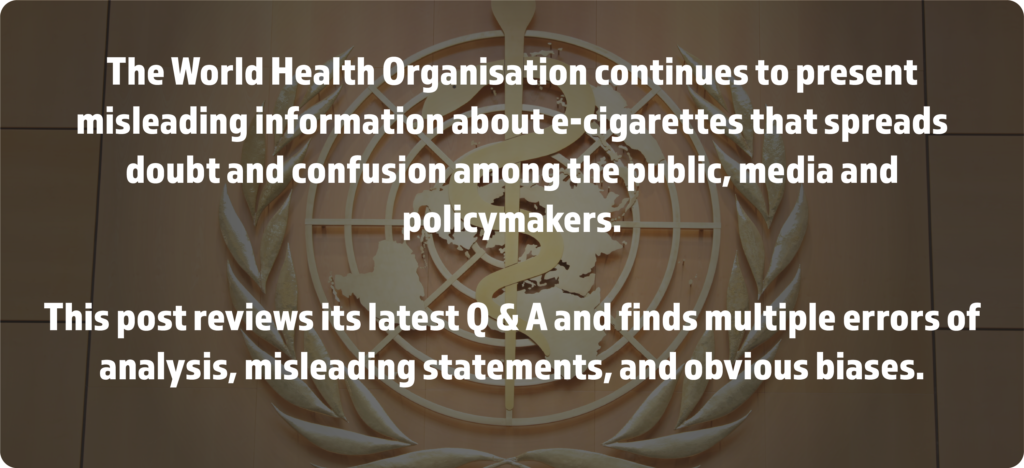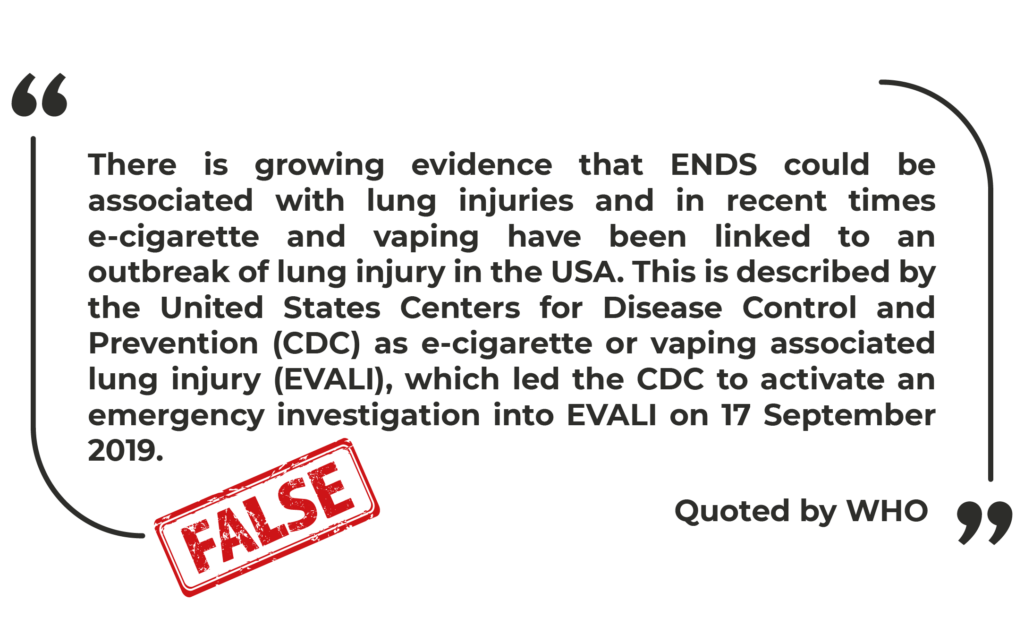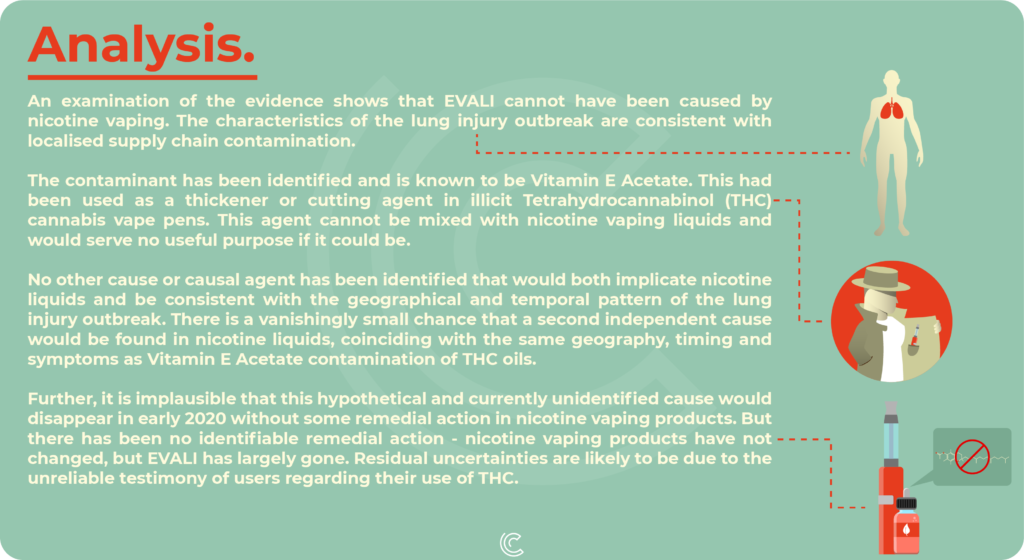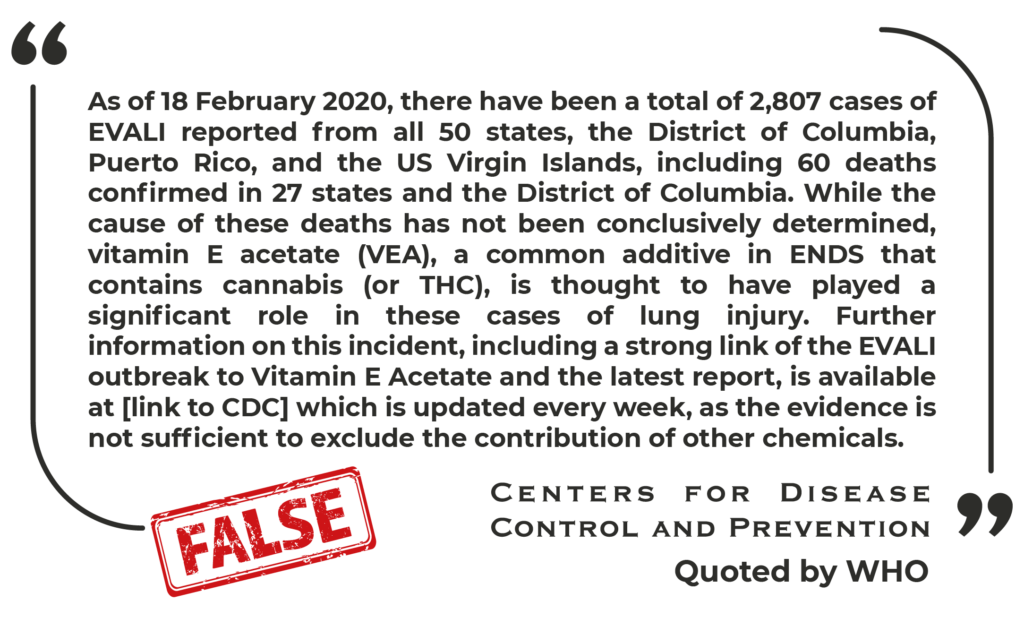The Counterfactual: Are e-cigarettes more or less dangerous than conventional tobacco cigarettes?
Republished from Clivebates.com with the consent of the author
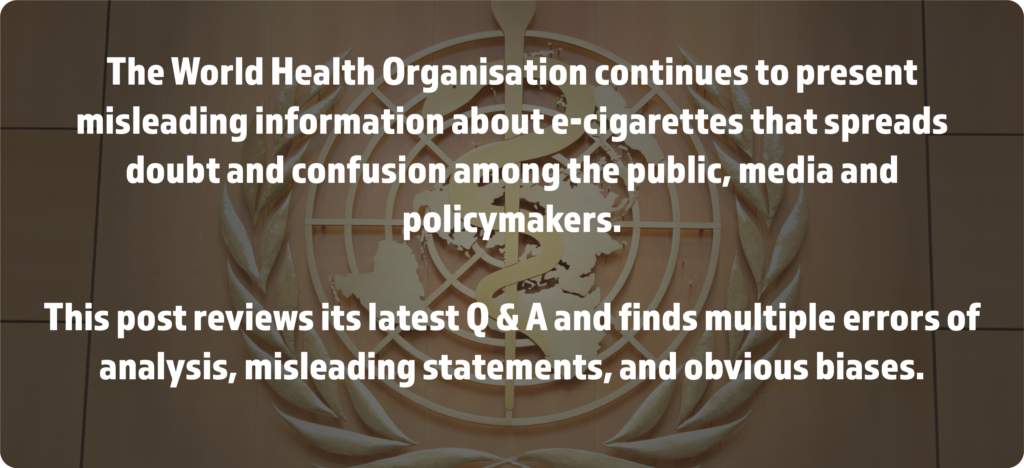
WHO goes through great contortions to avoid truthfully saying less dangerous. The most important feature of this section is that WHO does not answer this question with a truthful answer like “much less dangerous”. This is the correct unambiguous answer based on current scientific knowledge. In fact, WHO does not answer the question it poses at all – I suspect this is in order not to have to answer it truthfully.
The question is used to imply e-cigarettes may be more dangerous. The question itself creates an anchoring bias: suggesting that it is even possible that e-cigarettes may be as dangerous or more dangerous – as if it is somehow a finely balanced call. It is not finely balanced. Not even close. The reasonable question would be “how much less dangerous are e-cigarettes than conventional tobacco cigarettes?”. The answer is a lot less.
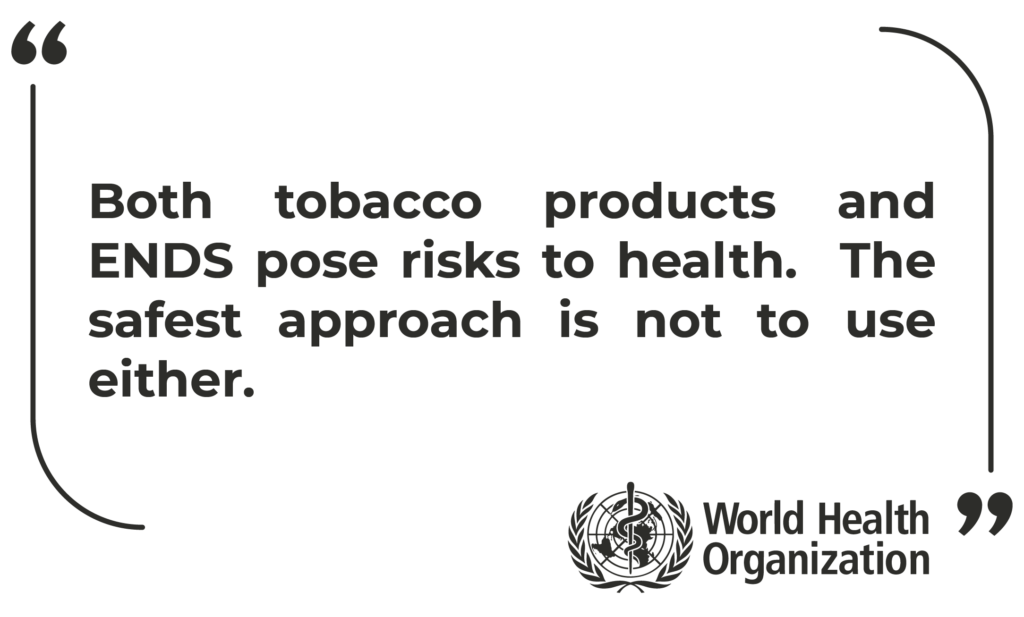
WHO offers a diversion from the question. Yes, but that formulation is simplistic: it avoids the “how dangerous?” questions and avoids the actual question asked in the Q & A – which is what is the relative risk of smoking and vaping? What if they differ in risk by a factor of about twenty times as many experts believe? Using neither may be a good option – but what about people who want to use nicotine or would find it difficult to stop?
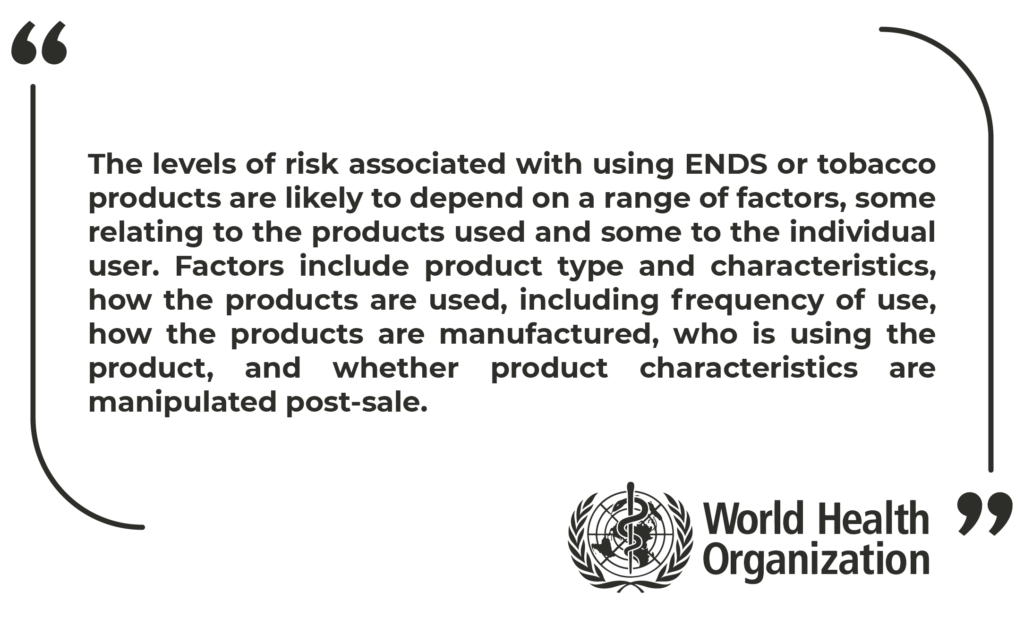
While ignoring the most fundamental difference (combustion), WHO introduces distracting but relatively trivial differences. WHO approaches this question on the basis that because we don’t know everything we must know nothing, adding the appearance of complexity to obscure more fundamental differences between e-cigarettes and cigarettes – namely that there are no products or combustion and smoke inhalation.
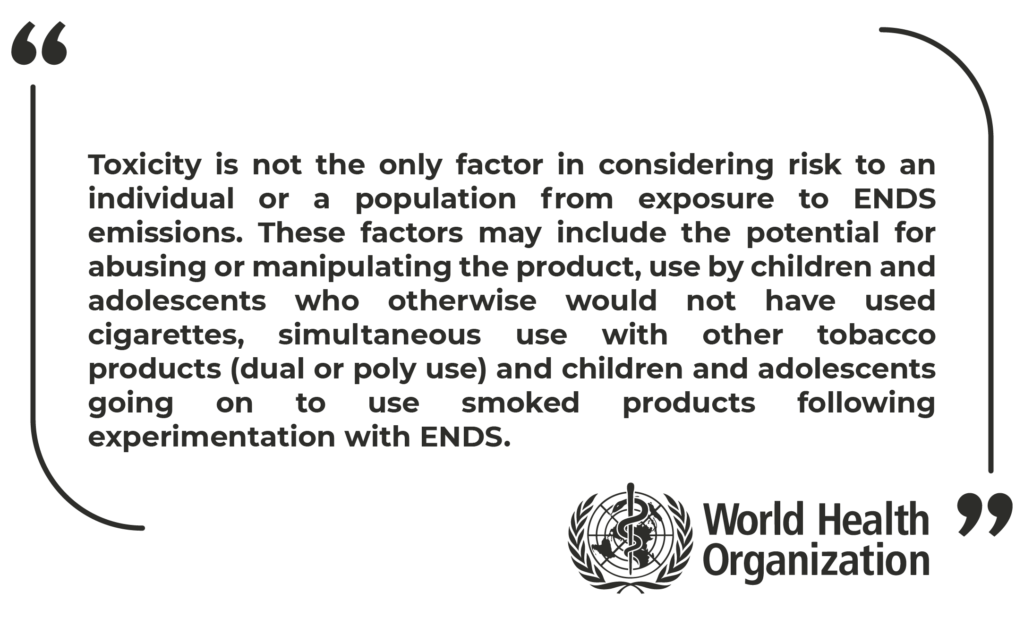
To avoid answering the actual question, WHO evokes a gateway effect. Here WHO just evokes imagined pathways by which the use of the much safer product leads to the use of the much more dangerous product – a kind of sleight of hand to imply that vaping and smoking pose equivalent risks. The problem is that these pathways are based on a gateway theory that does not hold water.
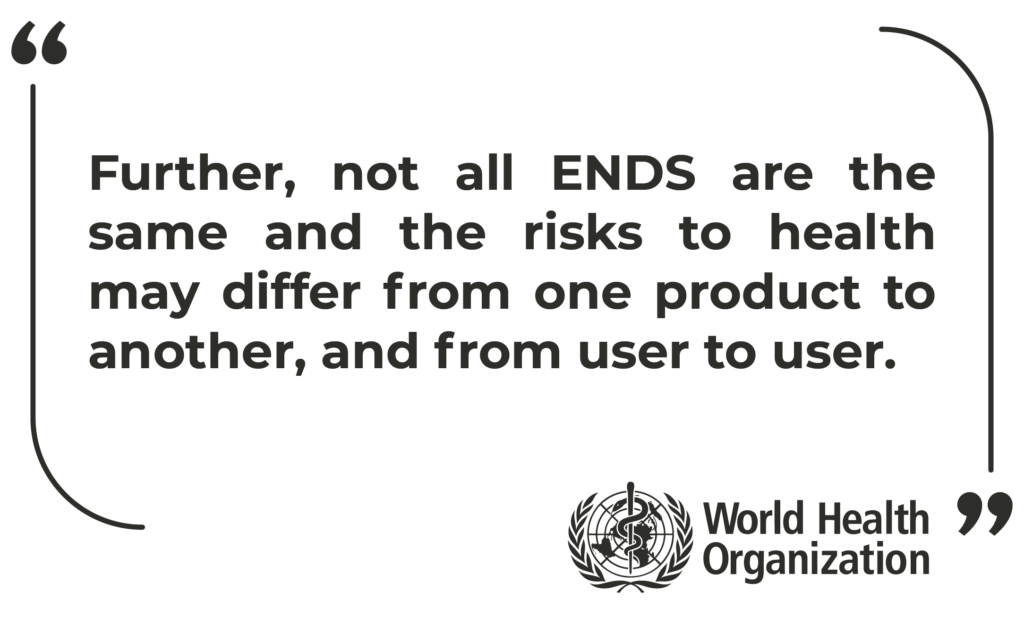
WHO deploys a device to introduce doubt and to remove confidence that general advice about e-cigarettes being safer can be relied upon. It is a Merchants of Doubt tactic. There are of course differences between different vaping products – and differences arise from the pattern of use between users. This is also the case with combustion products. However, this should not be allowed to obscure the huge difference between the combustion and non-combustion nicotine products at the level of the whole category. The difference between smoke inhalation and smoke-free is the difference that really counts.
The claim that smoking and vaping have equivalent risk is the Big Lie of tobacco control. It is inconceivable that this would be the case, yet it is an easy and lazy (or cynical) statement to make. When Professor Stanton Glantz made this case he used 700 words, my rebuttal took 13,000 – see: Vaping risk compared to smoking: challenging a false and dangerous claim by Professor Stanton Glantz
As I mentioned above, Public Health England suggests that “stating that vaping is at least 95% less harmful than smoking remains a good way to communicate the large difference in relative risk.” The Royal College of Physicians concurs:
“Although it is not possible to precisely quantify the long-term health risks associated with e-cigarettes, the available data suggest that they are unlikely to exceed 5% of those associated with smoked tobacco products, and may well be substantially lower than this figure.”
These are much better ways of answering the question that WHO poses than the answers provided by WHO, which essentially say nothing useful at all, just distraction and obfuscation.
Written by Clive Bates


